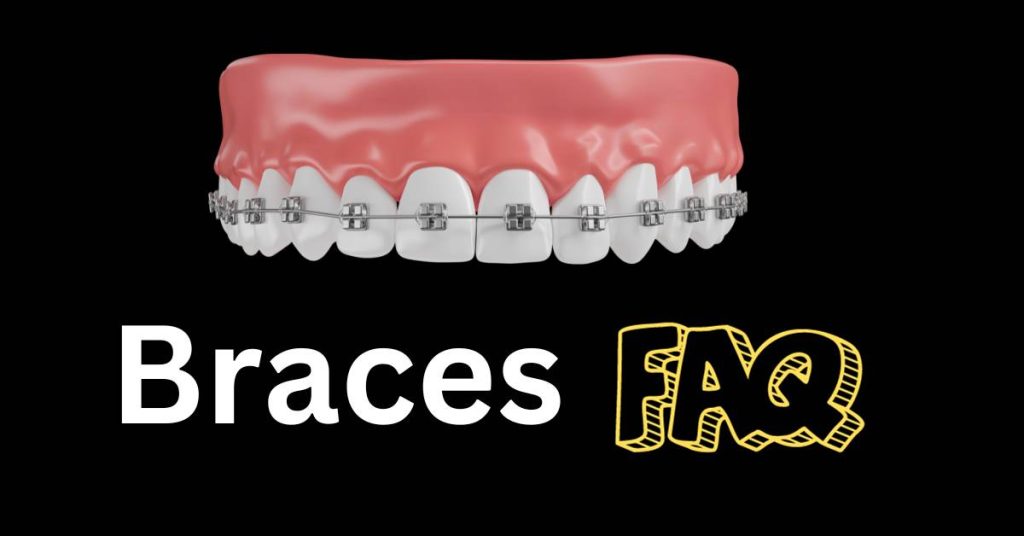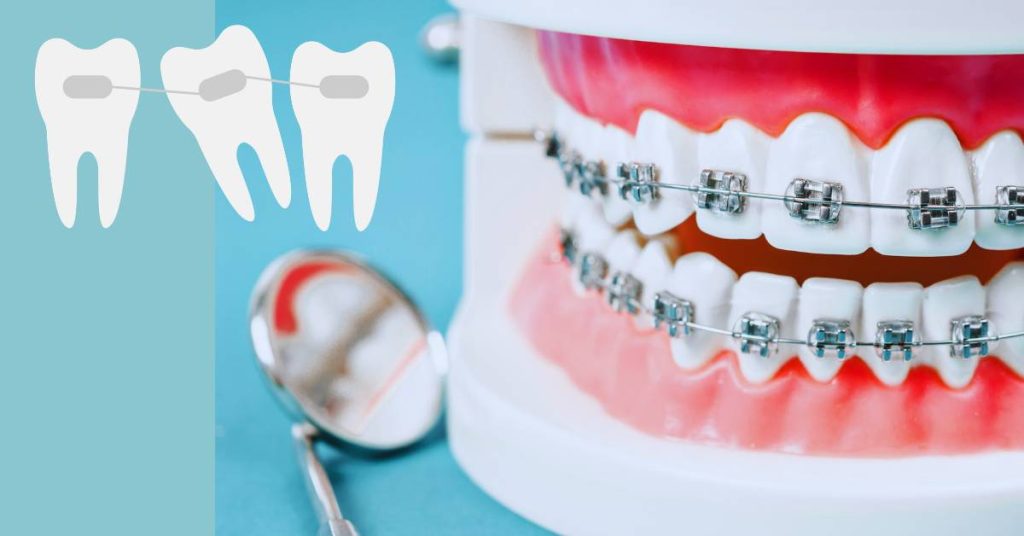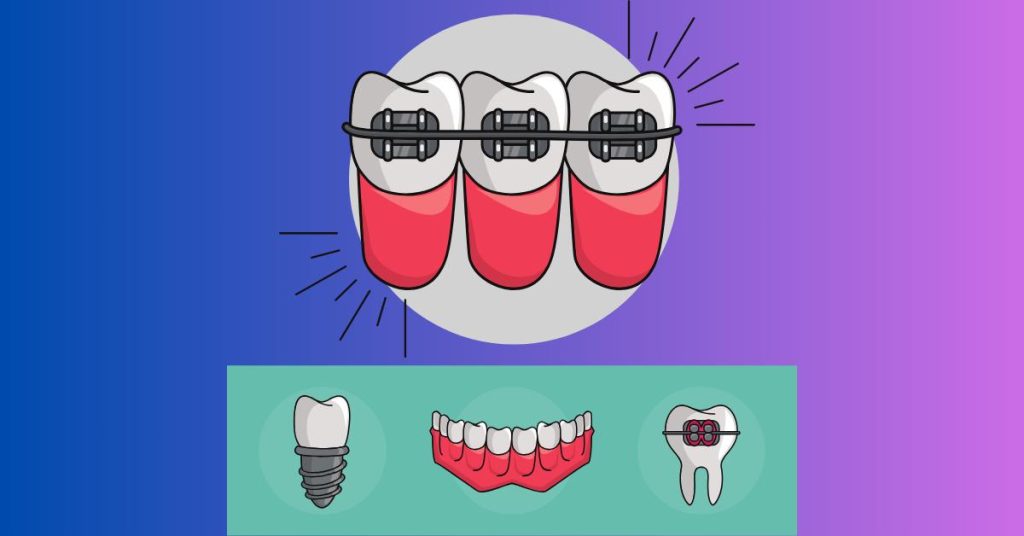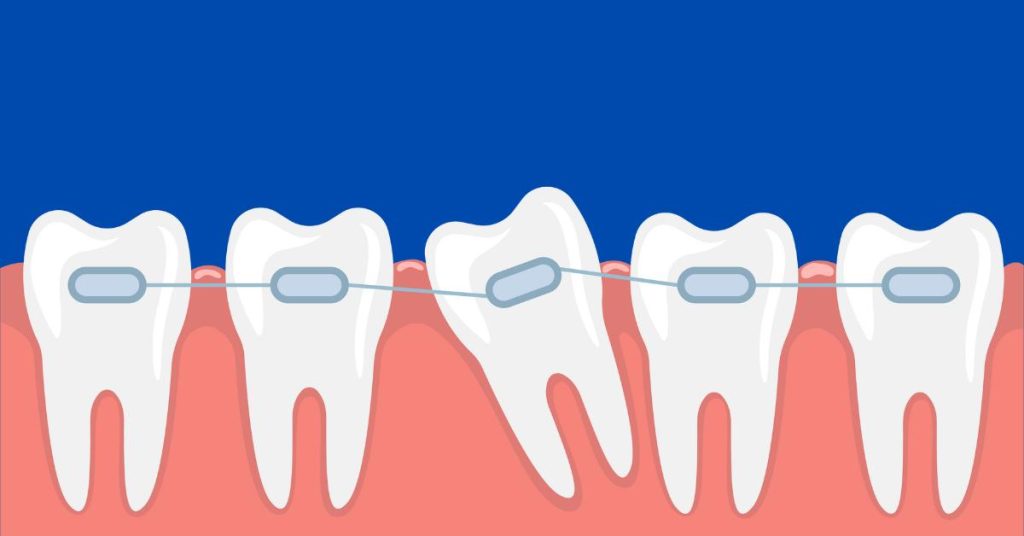Braces Faqs: Your Essential FAQ Handbook

Braces Faqs- Embrace a confident smile with our comprehensive braces FAQ guide, addressing all your questions and concerns about orthodontic treatment.
- What are braces, and why are they used?
- How long do I need to wear braces?
- Are braces painful?
- How should I care for my braces?
- What happens after braces are removed?
- What are the main reasons individuals seek braces treatment?
- How effective are braces in correcting misaligned teeth?
- What are the different types of braces available in the market?
- What is the average duration of braces treatment?
- What are the potential side effects or risks associated with braces?
- Are there any age limitations for getting braces?
- How much does braces treatment typically cost?
- What are the standard oral hygiene practices recommended during braces treatment?
- Do braces affect speech or eating habits during the treatment period?
- Are there any alternative orthodontic treatments to braces?
- How often are dental visits required during braces treatment?
- Can braces correct bite problems, such as overbite or underbite?
- What factors should be considered when choosing a braces provider?
- How long does it take to notice visible improvements after starting braces treatment?
- Are there any foods or habits that should be avoided while wearing braces?
- What are the different options for braces, colors, or styles?
- Do braces require any special care or maintenance?
- Are there any insurance options that cover braces treatment?
- How do braces affect self-confidence and self-esteem during the treatment period?
- Are there any long-term effects or considerations after braces treatment?
- Bottom Line
What are braces, and why are they used?
Braces, or orthodontic braces, are dental devices used to correct teeth alignment and bite issues. They consist of brackets, wires, and bands that gently pressure the teeth, gradually shifting them into the desired position. Braces are typically used to treat crowded or crooked teeth, gaps between teeth, overbites, underbites, and crossbites.
Important information:
- Braces are used to correct teeth alignment and bite issues.
- They consist of brackets, wires, and bands that apply gentle pressure on the teeth.
- Braces effectively treat crowded or crooked teeth, gaps between teeth, overbites, underbites, and crossbites.

How long do I need to wear braces?
The duration of orthodontic treatment with braces varies depending on the severity of the dental issue and the individual's response to treatment. On average, braces are worn for about one to three years. However, the actual time can be shorter or longer depending on factors such as the case's complexity, the patient's age, and the consistency in wearing rubber bands or other additional appliances as prescribed by the orthodontist.
Important information:
- The duration of braces treatment varies based on the individual and the case's complexity.
- Braces are worn for about one to three years.
- Consistency in wearing additional appliances, as the orthodontist prescribes, can influence treatment duration.
Are braces painful?
It is expected to experience discomfort or mild pain when braces are applied or adjusted. The pressure exerted on the teeth can cause soreness and sensitivity in the mouth. However, the discomfort usually subsides within a few days as the teeth adjust to the braces. Over-the-counter pain relievers can help alleviate any temporary discomfort. It's important to note that the level of pain or discomfort varies from person to person, and most individuals adapt to wearing braces relatively quickly.
Important information:
- Discomfort or mild pain is expected when braces are first applied or adjusted.
- The discomfort usually subsides within a few days as the teeth adjust to the braces.
- Over-the-counter pain relievers can help alleviate the temporary discomfort associated with braces.
How should I care for my braces?
Proper care and maintenance of braces are essential to ensure the success of the treatment and maintain oral hygiene. Here are some essential care tips for braces: - Brush your teeth after every meal using a soft-bristle toothbrush and fluoride toothpaste. - Daily use special orthodontic floss or floss threaders to clean between the teeth and under the wires. - Avoid hard, sticky, and chewy foods that can damage the braces. - Visit your orthodontist regularly for adjustments and check-ups.
Important information:
- Brush your teeth after every meal and floss daily when wearing braces.
- Avoid consuming hard, sticky, and chewy foods that can damage the braces.
- Regular visits to the orthodontist are necessary for adjustments and check-ups.

What happens after braces are removed?
Once the braces are removed, your orthodontist may recommend wearing a retainer. A retainer helps maintain the new position of your teeth and prevents them from shifting back to their original position. Retainers can be removable or fixed, depending on your orthodontist's recommendation. Following your orthodontist's instructions regarding retainer wear is crucial to ensure the long-term stability of your newly aligned teeth.
Important information:
- After braces are removed, a retainer may be recommended to maintain the new position of the teeth.
- Retainers can be removable or fixed, depending on your orthodontist's recommendation.
- Following the orthodontist's instructions for retainer wear is crucial for the long-term stability of the teeth after braces.
What are the main reasons individuals seek braces treatment?
Individuals seek braces treatment for various reasons, including improving the appearance of their smile, addressing misaligned or crooked teeth, correcting bite issues, and achieving better oral health.
How effective are braces in correcting misaligned teeth?
Braces are highly effective in correcting misaligned teeth. They apply gentle and continuous pressure on the teeth, gradually moving them into the desired position over time. This process helps align the teeth, close gaps, and improve dental alignment.
What are the different types of braces available in the market?
Several types of braces are available, including traditional metal braces, ceramic braces, lingual braces, and clear aligners. Metal braces consist of metal brackets and wires. Ceramic braces use tooth-colored or clear brackets for a more discreet appearance. Lingual braces are placed on the backside of the teeth, and clear aligners are removable trays that gradually shift the teeth.
What is the average duration of braces treatment?
The average duration of braces treatment varies depending on the case's complexity. Typically, braces are worn for about 1 to 3 years. However, variables like the degree of misalignment, age, and the patient's response to treatment can affect the precise period.

What are the potential side effects or risks associated with braces?
While braces are generally safe and well-tolerated, there are potential side effects and risks. These can include temporary discomfort or soreness, mouth ulcers or irritation, difficulty speaking or eating initially, and an increased risk of tooth decay or gum problems if proper oral hygiene is not maintained.
Are there any age limitations for getting braces?
There are no specific age limitations for getting braces. Both children and adults can benefit from orthodontic treatment. Orthodontic evaluation can be done at any age, and the treatment plan is customized based on individual needs and oral health conditions.
How much does braces treatment typically cost?
The cost of braces treatment can vary depending on the type of braces chosen, the case's complexity, geographical location, and the orthodontic practice. On average, braces treatment can range from a few thousand to several thousand dollars.
What are the standard oral hygiene practices recommended during braces treatment?
During braces treatment, it is essential to maintain good oral hygiene. This includes brushing your teeth after every meal and flossing daily. Using interdental brushes or water flossers can help clean hard-to-reach areas. Regular dental check-ups and cleanings are also essential.
Do braces affect speech or eating habits during the treatment period?
Initially, braces may temporarily affect speech or eating habits as the mouth adjusts to the presence of braces. However, most individuals quickly adapt, and any changes are typically minimal. Following any dietary restrictions the orthodontist provides is essential to avoid damaging the braces.
Are there any alternative orthodontic treatments to braces?
Yes, there are alternative orthodontic treatments to braces. Clear aligners, such as Invisalign, are a popular alternative. These are custom-made, removable trays that gradually move the teeth. However, the suitability of alternative treatments may depend on the specific orthodontic needs of the individual, and it is best to consult with an orthodontist for personalized recommendations.
How often are dental visits required during braces treatment?
Regular dental visits are typically required every 4 to 8 weeks during braces treatment. These visits allow the orthodontist to monitor the progress of the treatment, make any necessary adjustments, and address any concerns or issues that may arise.
Can braces correct bite problems, such as overbite or underbite?
Yes, braces can be used to correct bite problems, including overbite or underbite. By applying the appropriate forces, braces can help align the teeth and jaws to improve the bite and achieve a more harmonious dental relationship.
What factors should be considered when choosing a braces provider?
When choosing a braces provider, it is crucial to consider factors such as the orthodontist's experience and qualifications, the reputation and credibility of the practice, the range of treatment options offered, the convenience of location and appointment scheduling, and the overall cost and payment options available.
How long does it take to notice visible improvements after starting braces treatment?
The time it takes to notice visible improvements after starting braces treatment can vary depending on the case. In some cases, noticeable changes can be observed within a few months. However, it may take several months or longer to achieve the desired final results. Regular follow-ups with the orthodontist can help track progress.
Are there any foods or habits that should be avoided while wearing braces?
Yes, some specific foods and habits should be avoided while wearing braces. Hard, sticky, or chewy foods can damage the braces or get stuck, making oral hygiene more challenging. It is best to avoid foods like popcorn, hard candies, gum, and chewy or sticky snacks. Additionally, habits like nail-biting or chewing on objects should be avoided.
What are the different options for braces, colors, or styles?
There are various options for braces, colors, and styles to suit individual preferences. Traditional metal braces typically have silver-colored brackets and wires. Some orthodontic practices offer colored bands that can be customized to create a personalized look. Ceramic braces are tooth-colored or clear, offering a more discreet option. Lingual braces on the backside of the teeth are less visible.
Do braces require any special care or maintenance?
Braces require special care and maintenance to ensure successful treatment. This includes regular and thorough brushing, flossing, and rinsing with mouthwash. Brackets and wires can make you uncomfortable, but orthodontic wax can help. It is essential to follow the orthodontist's instructions for cleaning and caring for the braces and to attend regular check-ups.
Are there any insurance options that cover braces treatment?
Some dental insurance plans may offer braces treatment coverage, particularly for children's orthodontic treatment. However, coverage varies depending on the insurance provider and policy. Reviewing the insurance policy details or consulting with the insurance provider to determine the extent of coverage for braces treatment is recommended.
How do braces affect self-confidence and self-esteem during the treatment period?
Braces can initially impact an individual's self-confidence and self-esteem, especially in social settings. However, as the treatment progresses and visible improvements are noticed, many individuals experience a boost in self-confidence. Additionally, the knowledge that braces are working to improve their smile and oral health often helps individuals maintain a positive outlook during treatment.
Are there any long-term effects or considerations after braces treatment?
After braces treatment, individuals may wear retainers to maintain the achieved results. Retainers help prevent the teeth from shifting back to their original positions. Following the orthodontist's instructions regarding retainer wear and maintenance is essential. Regular dental check-ups are also recommended to monitor the long-term stability of the results and ensure optimal oral health.
Bottom Line
Braces are dental appliances that are used to align and straighten teeth. They are typically made of metal or ceramic brackets that are bonded to the front of each tooth. A wire is then threaded through the brackets and tightened to move the teeth into the desired position gradually.
Braces can be used to treat a wide range of orthodontic problems, including:
- Crooked teeth
- Crowded teeth
- Gapped teeth
- Overbite
- Underbite
- Open bite
Braces treatment typically takes 12 to 18 months, but it can vary depending on the severity of the malocclusion. Once treatment is complete, the braces are removed and the teeth are retained in their new position with a retainer.
Braces are a safe and effective way to improve the appearance of your teeth and your bite. They can also help to improve your oral health by making it easier to clean your teeth and gums.
If you are considering braces, it is important to talk to an orthodontist to discuss your treatment options.

Recommendation